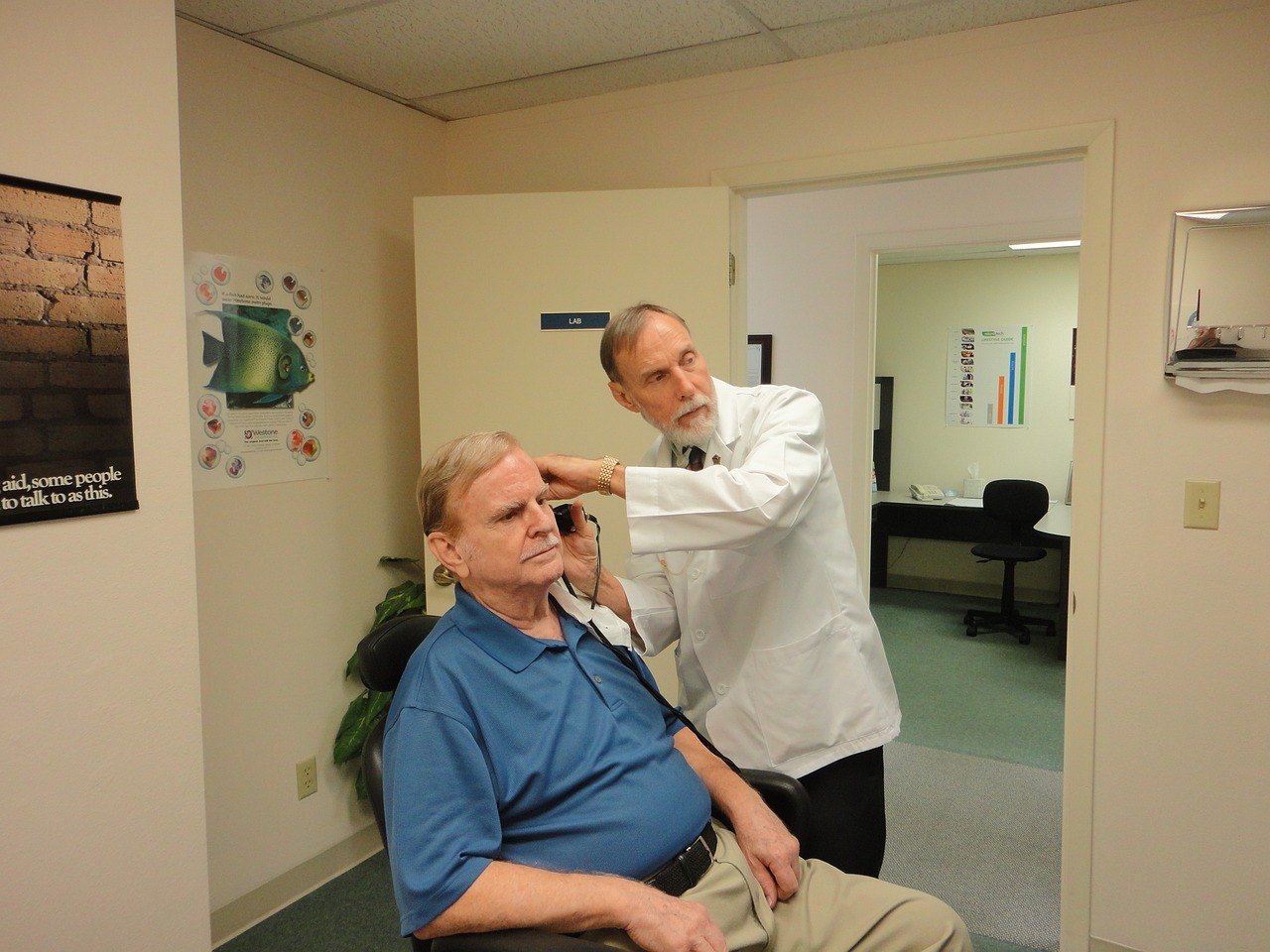Navigating the landscape of senior health issues is crucial for aging well. As we get older, we’re more likely to face health challenges that significantly impact our quality of life. So we’re going to shed some light on 10 common elderly health issues, along with some tips on how to avoid or manage them. Providing seniors with the knowledge to promote healthier aging and a long life.
Understanding Elderly Health Issues
The Aging Process and Health
Aging is a natural part of life, characterized by physical and psychological changes within us.
Physiologically, seniors experience reduced muscle strength, bone density, and skin elasticity. These changes can impact mobility, balance, and overall resilience to injuries or illnesses. Psychologically, aging can affect cognitive functions, emotional well-being, and social interactions.
Recognizing these transformations is the first step in addressing common health problems associated with aging.
Risk Factors for Elderly Health Issues
The risk factors for senior health issues are multifaceted:
- Genetics: predispositions increase the likelihood of developing certain health conditions.
- Environment: exposure to pollutants or inadequate living conditions contributes to health risks.
- Lifestyle: diet, exercise, and habits influence the onset and progression of many health issues.
By understanding these risk factors and the nature of aging, seniors can better navigate the challenges that come with advancing years. Always consult with healthcare professionals for personalized advice and conduct regular health screenings.
The 10 Common Health Issues in the Elderly
1. Heart Disease
Heart disease encompasses a range of conditions affecting the heart’s structure and function. In seniors, this can include issues like angina, heart failure, and arrhythmias.
It’s one of the most common senior health issues, with ischemic heart disease affecting 27% of people aged 65 and older. Indicating a need for awareness and proactive management of heart conditions amongst seniors.
Symptoms of Heart Disease
Symptoms vary, but common indicators include chest pain, shortness of breath, and fatigue. Early detection and ongoing management are key to improving outcomes.
Heart Disease Management and Treatment
Effective management of heart disease involves a combination of medication, lifestyle changes, and potentially surgery. Lifestyle changes especially play a vital role in managing heart disease. This includes adopting a heart-healthy diet, engaging in regular physical activity, and quitting smoking.
Reducing Your Risk of Heart Disease
Reducing the risk of heart disease will involve some lifestyle changes. Proper nutrition tailored to seniors is essential for heart health. Implementing these strategies can also significantly reduce the risk of developing heart disease:
- Regular Physical Activity: Engage in at least 150 minutes of moderate-intensity aerobic exercise or 75 minutes of vigorous exercise each week.
- Manage Weight: Achieve and maintain a healthy weight to reduce strain on the heart.
- Quit Smoking and Limit Alcohol: Smoking cessation and moderating alcohol intake significantly lower heart disease risk.
- Control Blood Pressure and Cholesterol: Regular check-ups, a healthy diet, and medication if prescribed can help control blood pressure and cholesterol levels.
- Manage Stress: Practice stress-reduction techniques like meditation, yoga, or deep breathing exercises.
- Regular Health Screenings: Regular check-ups can help detect and manage risk factors like high cholesterol, high blood pressure, and diabetes early on.
- Get Adequate Sleep: Aim for 7-9 hours of quality sleep per night.
- Diabetes Management: If you have diabetes, proper management is crucial to reduce the risk of heart disease.

2. Arthritis
Arthritis is characterized by joint inflammation. It’s a common senior health issue referring to a group of more than 100 rheumatic diseases and conditions. Osteoarthritis is the most common form, resulting from wearing down cartilage in the joints. Which leads to pain, stiffness, and swelling.
Arthritis, particularly osteoarthritis, is a common health issue among Canadian seniors. Due to the increase in our aging population, it’s expected there will be roughly 7 million Canadians living with arthritis by 2031. The condition is more prevalent in females (16.1%) compared to males (11.1%).
Arthritis Symptoms and Risk Factors
This degenerative condition primarily affects weight-bearing joints like the knees, hips, and spine. And will significantly limit activities and lead to disability in seniors.
The symptoms of osteoarthritis can vary but often include joint pain, stiffness, and sometimes swelling. While age is a significant risk factor, it’s not the sole cause. Obesity is linked to an increased risk of osteoarthritis due to stress on weight-bearing joints. Other contributing factors are previous joint injuries, joint inflammation, certain diseases like diabetes, hereditary factors, and lack of physical activity.
Managing Arthritis in the Elderly
Management of arthritis in seniors involves both prevention and coping strategies. By addressing risk factors, embracing healthy habits, and seeking appropriate medical care, seniors can manage arthritis symptoms and maintain a more active, fulfilling life.
Preventing Arthritis
While arthritis can’t always be completely prevented, these measures can significantly reduce the risk or delay its onset. Reducing your risk of arthritis, especially osteoarthritis, involves several lifestyle and health strategies:
- Maintain a Healthy Weight: Excess weight can increase stress on joints, particularly knees, hips, and spine, accelerating cartilage wear.
- Regular Exercise: Mobility exercises for seniors with arthritis maintain joint flexibility and build muscle strength.
- Protect Joints: Avoid repetitive stress on joints and use proper techniques during physical activities like lifting.
- Healthy Diet: A diet rich in antioxidants (fruits, vegetables) and omega-3 fatty acids (fish) can help reduce inflammation.
- Avoid Smoking and Excessive Alcohol: Smoking and excessive alcohol can contribute to bone health issues.
- Posture and Ergonomics: Practice good posture and ergonomic principles at work and home to reduce joint strain.
3. Osteoporosis
Osteoporosis causes bones to become brittle and fragile, leading to a higher risk of fractures even from minor falls. It’s one of the common health problems associated with aging specifically. It’s estimated that 2.3 million people in Canada are affected by osteoporosis. Fractures resulting from osteoporosis happen more often than heart attacks, strokes, and breast cancer combined.
Symptoms and Risk Factors for Osteoporosis
It develops silently over the years, so normally you won’t be diagnosed until a fracture occurs. The most common fractures associated with osteoporosis are in the wrist, spine, and hip. Hip fractures are particularly concerning in seniors, as they can lead to increased mortality, long-term disability, and a need for long-term care.
Several factors increase the risk of developing osteoporosis:
- Gender: Women, especially post-menopausal, are at higher risk.
- Age: The risk increases with age.
- Family History: A family history of osteoporosis increases risk.
- Low Body Weight and Diet: A diet low in calcium and low body weight are risk factors.
- Physical Inactivity: Lack of exercise can contribute to weaker bones.
- Other Factors: Smoking, excessive caffeine or alcohol intake, and certain medications can increase risk.
Minimizing Your Risk of Osteoporosis
Strength training is the best way to avoid osteoporosis and its impact. Concentrate on weight-bearing and balance-improving exercises. Diet is another essential component. Incorporate foods that improve bone health.
4. Respiratory Diseases

Due to our immune system weakening as we age, there is an increased risk of respiratory diseases among seniors. Respiratory diseases affect our lungs and breathing, which can seriously impact our quality of life. Almost one-third of Canadians aged 65 are affected by respiratory diseases.
Types and Symptoms of Respiratory Diseases
While there are a variety of respiratory diseases, seniors are commonly affected by:
- Chronic Obstructive Pulmonary Disease (COPD): A group of diseases, including emphysema and chronic bronchitis, that cause airflow blockage and breathing-related problems.
- Asthma: Chronic inflammation of airways causing wheezing, shortness of breath, and coughing.
- Sleep Apnea: Obstruction of the upper airways that repeatedly prevents breathing during sleep.
Preventing Respiratory Diseases
By understanding these conditions and adopting lifestyle changes, seniors can better manage their respiratory health and maintain a higher quality of life. To prevent or manage these conditions, seniors should:
- Quit Smoking: Smoking is a major cause of serious lung diseases like COPD. Even after many years, quitting can significantly improve lung health.
- Avoid Second-hand Smoke: Exposure to second-hand smoke is also harmful and can cause respiratory diseases.
- Maintain Good Hygiene: Proper handwashing reduces the risk of infectious respiratory diseases like colds and flu.
- Avoid Air Pollution: Both indoor and outdoor air pollution can exacerbate respiratory conditions. Seniors should monitor the Air Quality Index and stay indoors when pollution levels are high.
5. Alzheimer’s Disease and Dementia
Alzheimer’s disease is a progressive brain disorder that gradually destroys memory and thinking skills. Eventually, the ability to carry out even the simplest tasks will be lost. It’s also one of the most common health problems associated with aging, and the leading cause of dementia in older adults.
Dementia itself is an umbrella term for a decline of cognitive functions. These conditions affect memory, language, problem-solving, and other thinking skills severely enough to impede daily life.
In Canada, more than 747,000 people live with dementia. Among them, about two-thirds are women. Unfortunately, this number is expected to rise as more Canadians get older.
Symptoms and Risk Factors for Alzheimer’s Disease
People over the age of 65 are at high risk of cognitive decline, and it tends to affect women more than men. Certain genetic factors, head trauma, or a family history of Alzheimer’s can also increase the risk.
The symptoms of Alzheimer’s disease can be subtle After all, anyone might forget things sometimes. But if you notice progressively worsening memory loss over time, difficulty in thinking and reasoning, or impaired judgment and decision-making — those are likely an indication of decline. More severe symptoms might be difficulty performing familiar tasks like personal grooming or sudden changes in personality and behaviour.
Strategies to Prevent Cognitive Decline
Studies have shown that lifestyle changes can help reduce cognitive decline in people at risk of dementia. By adopting a healthy lifestyle and staying mentally and socially engaged, individuals can potentially reduce their risk of developing dementia. Conducting mental exercises can prevent cognitive decline in seniors as well.
While Alzheimer’s disease is not entirely preventable, modifying those lifestyle factors can help reduce the risk.
6. Diabetes
Diabetes is a common senior health issue that encompasses a group of diseases affecting how the body uses blood sugar (glucose). Glucose is an essential energy source for muscles, tissues, and the brain.
Nearly 1 in 5 Canadian seniors aged 60 to 79 have been diagnosed with diabetes.
For seniors, they’re most at risk of developing type 2 diabetes. Which is either insufficient insulin production or an inability to effectively use insulin, leading to high blood sugar levels. Both can cause serious health complications.
Diabetes Symptoms and Risk Factors
Common symptoms of diabetes include increased thirst and urination, sudden weight loss, fatigue, as well as experiencing unusual irritability and mood changes. Some people also get blurred vision, frequent infections, and cuts or bruises that take longer than normal to heal.
Risk factors for seniors will vary depending on the type of diabetes. A family history of diabetes or being overweight are the primary risks. Certain ethnic groups and environmental conditions can also influence it.
Diabetes Prevention Strategies
Healthy lifestyle choices are essential in managing prediabetes and reducing the risk of developing type 2 diabetes. In some cases, medications may be used to lower the risk.
- Healthy Diet: Opt for a diet low in fat and calories, high in fibre, and rich in fruits, vegetables, and whole grains.
- Physical Activity: Aim for at least 150 minutes of moderate aerobic activity per week.
- Weight Management: Losing even a small percentage of body weight can significantly reduce the risk of diabetes.
- Regular Health Check-ups: For those with prediabetes, regular blood sugar monitoring is crucial to prevent progression to type 2 diabetes.
7. Flu and Pneumonia
Flu and pneumonia are respiratory conditions caused by bacteria, viruses, or fungi, that can have serious implications for seniors. Many seniors are affected by flu and pneumonia annually. Flu and pneumonia pose a higher risk for seniors due to their often weakened immune systems and the presence of other underlying health conditions.
The flu, caused by the influenza virus, is highly contagious and affects the lungs, nose, and throat.
Pneumonia, on the other hand, is an infection that inflames the air sacs in one or both lungs, which may fill with fluid or pus.
Pneumonia Symptoms and Risk Factors
Symptoms of flu in seniors can include fever, cough, sore throat, runny or stuffy nose, muscle or body aches, headaches, and fatigue. Pneumonia symptoms may include chest pain, coughing up phlegm, fatigue, fever, and shortness of breath.
Seniors are more susceptible to developing pneumonia because of a weakened immune system. Additional risk factors for both conditions include underlying chronic health conditions like diabetes or heart disease as well as lifestyle factors such as smoking.
Preventing Flu and Pneumonia
Prevention is key in protecting seniors from flu and pneumonia. For both flu and pneumonia, vaccinations are your best defence.
Regular hand washing, avoiding close contact with sick individuals, and maintaining a healthy lifestyle can also greatly reduce the risk. Indoor air quality should also be monitored, especially during winter months when homes are often closed up, to reduce the risk of respiratory infections.

8. Fall-Related Injuries
Falling is a common senior health issue because it’s the leading cause of injury among seniors. Factors like reduced muscle strength, balance issues, and chronic health conditions cause seniors to be more prone to falls. This can lead to severe injuries such as fractures and head traumas.
A staggering 20-30% of elderly Canadians experience falls each year, leading to hospitalizations or long-term health complications. These incidents not only affect the physical health of seniors but also their emotional well-being.
Risk Factors for Seniors
While falls themselves are not a disease with symptoms, there are warning signs and risk factors. These include balance problems, muscle weakness, and vision issues. Even side effects from medications can affect stability and coordination.
Environmental factors like slippery floors, poor lighting, and uneven surfaces also contribute to the risk of falls.
Preventing Falls
Preventing falls involves a multifaceted approach. Regular exercise, especially activities that enhance balance and strength, is crucial. Seniors should have their vision and hearing checked regularly, as these can affect balance.
It’s also important to review medications with a healthcare provider to understand any side effects that may contribute to falls.
In the home, safety measures such as installing grab bars in the bathroom, ensuring good lighting, and removing trip hazards like loose rugs can make a significant difference. Wearing proper footwear that provides good support and grip is also essential.
9. Cancer
Cancer is a common health problem associated with aging. It’s a broad term for diseases characterized by abnormal cell growth with the potential to invade or spread to other parts of the body. It refers to a wide range of conditions, each with its own set of challenges and treatment approaches.
Cancer significantly impacts Canadian seniors. A report from the Canadian Cancer Society reveals that over 1.5 million people in Canada are living with cancer. This rise is attributed to both increased survival rates and a growing incidence of cancer diagnoses.
Symptoms and Risk Factors for Cancer
Symptoms of cancer vary widely depending on the type but can include fatigue, weight changes, skin changes, persistent cough or trouble breathing, and difficulty swallowing.
Aside from age, risk factors include family history, lifestyle choices (such as smoking and diet), and exposure to certain environmental factors.
Cancer Prevention Tips for Seniors
Prevention and early detection are crucial in managing cancer risk in seniors. This includes regular health screenings and maintaining a healthy lifestyle. Awareness of your personal and family medical history is also important, as it can inform screening and prevention strategies.
10. Sensory Impairment (Vision or Hearing Loss)
Sensory impairments are common senior health issues that lead to vision and hearing loss. Sensory impairments significantly impact older adults and their quality of life. About 23% of Canadian seniors reported a sensory disability that lasted six months or more. Hearing disabilities were the most common, followed by vision impairment.
Moreover, more than one-third of older adults have some form of vision problems or loss by age 65, and nearly 50% of those older than 75 have disabling hearing loss.
Sensory Impairment Symptoms and Risk Factors for Seniors
Symptoms of vision impairment can range from slight blurriness to total blindness. Hearing loss can range from a reduced ability to hear certain frequencies to complete deafness.
Risk factors for these sensory impairments include age, genetics, exposure to loud noises or bright lights, and certain medical conditions like diabetes.
Both vision and hearing impairments are highly treatable. Corrective measures like glasses, contact lenses, or eye surgery can help with vision loss. Hearing aids and cochlear implants are effective for hearing loss.

Preventing Sensory Impairment
While age-related sensory decline can be challenging, it’s often preventable and treatable. Regular exams are essential for early detection.
Wearing sunglasses to protect eyes from UV rays and reducing screen time can also help preserve vision.
For hearing health, avoiding prolonged exposure to loud noises and using hearing protection in noisy environments like a concert.
Health Screenings for Early Detection of Common Senior Health Issues
The importance of health screenings for early detection in the elderly cannot be overstated. Regular screenings play a crucial role in identifying common senior health issues at an early stage, often before symptoms appear.
Early detection significantly improves outcomes and quality of life for seniors. It enables timely intervention, reducing the severity and impact of the health issue. In some cases, it can even be life-saving.
With regular health screenings seniors maintain their health proactively, emphasizing prevention over treatment.
Conclusion
Understanding and addressing common health issues in the elderly is crucial for enhancing their quality of life. From heart disease and arthritis to cancer and sensory impairments, each condition presents its own set of challenges but also opportunities for effective management and prevention.
Through awareness, regular health screenings, and lifestyle adjustments, seniors can mitigate the risks associated with these conditions. This proactive approach to elderly health care empowers seniors to live their lives to the fullest, embracing aging with grace and dignity. Let’s continue to support and encourage our seniors in their journey toward wellness and vitality.



